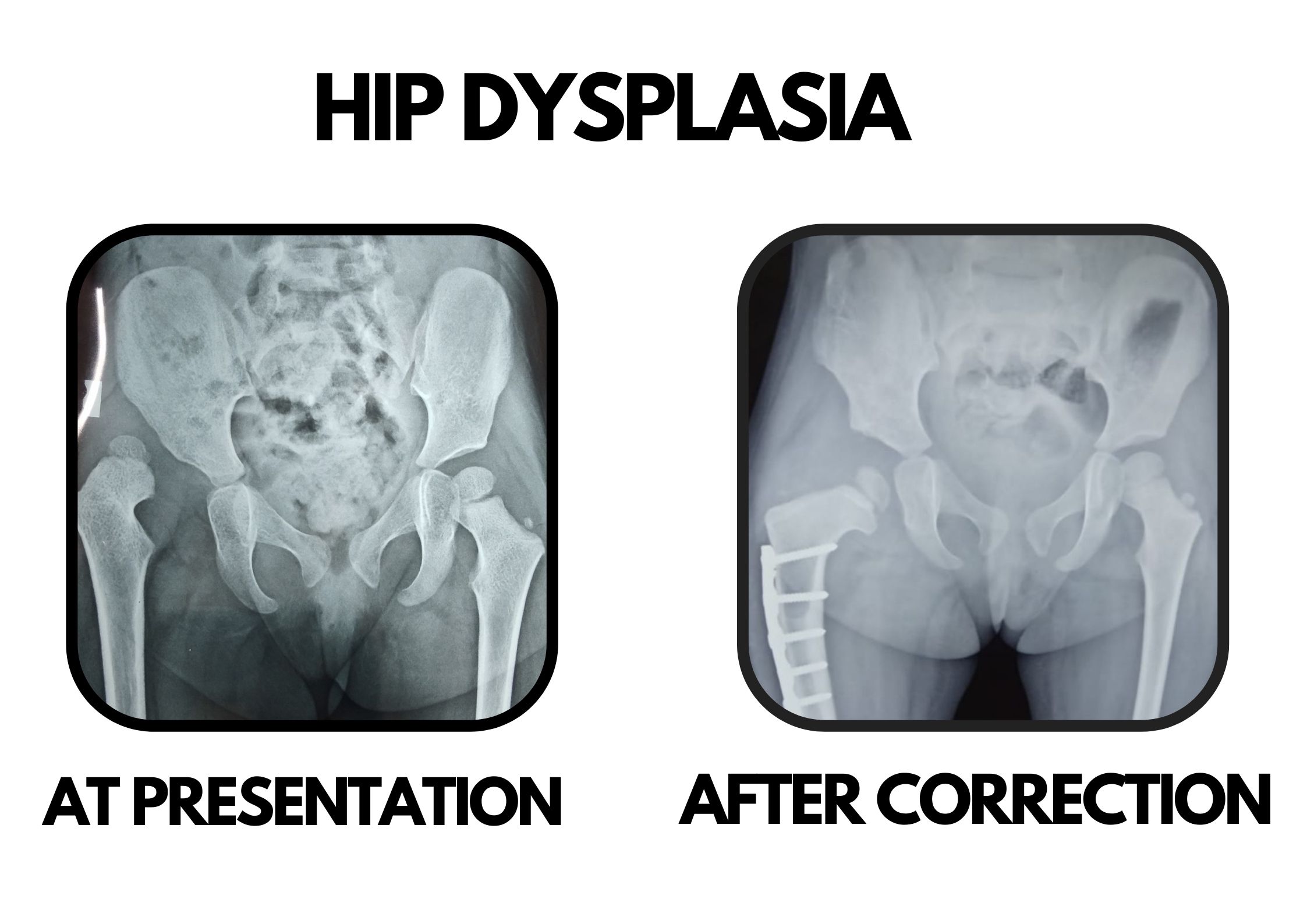8 Years Experience
MBBS, MS (Orthopaedics) FIPO (Mumbai)Consultant Paediatric Orthopaedic & Limb reconstruction surgeon.

Developmental dysplasia of hip is a condition in which part of the hip joint (ball and socket joint) is dysplastic or abnormal. It is usually the socket or acetabulum part of hip joint which is usually not deep or curved enough (flat) to keep the ball (head of femur/thigh bone) concentrically reduced. Depending upon the severity, the ball can be either partially or completely out of the socket. In other cases the hip joint is reduced but is unstable and can be dislocated on clinical manueveres.
Its incidence varies between 1 to 3 in every 1000 live births. It can be present at birth or during the first year of life.It can be present in isolation or in association with other musculoskeletal disorders. It is usally more common in females, first born child, breech presentation (bottom of baby is delivered first in place of head) and in oligohydramions pregnancies.
Every child should be examined thoroughly by a paediatrician to rule out ddh and in case of any doubt, the child should be timely referred to a paediatric orthopaedic surgeon.
It is sometimes difficult to detect DDH early as there are no obvious signs present. However a careful clinical examination of both the lower limbs will be able to make out a diagnosis. Apart from examination there are other studies including USG and X-rays of the hips to confirm the diagnosis of DDH.
Treatment of DDH is age dependent:
Outcomes: Regular long term follow ups are required to ensure normal development of the hip joint. Most of children with have good functional hips after appropriate treatment. Some patients may need further surgery for residual dysplasia. However if left untreated, dysplastic hips can lead to early degeneration and pain of the affected hips.

Consultant Paediatric Orthopaedic & Limb reconstruction surgeon.
© Copyright 2020. All Rights Reserved | Powered by Dr Deepak khurana- Paediatric Orthopaedic Surgeon Crafted by CWM Technologies